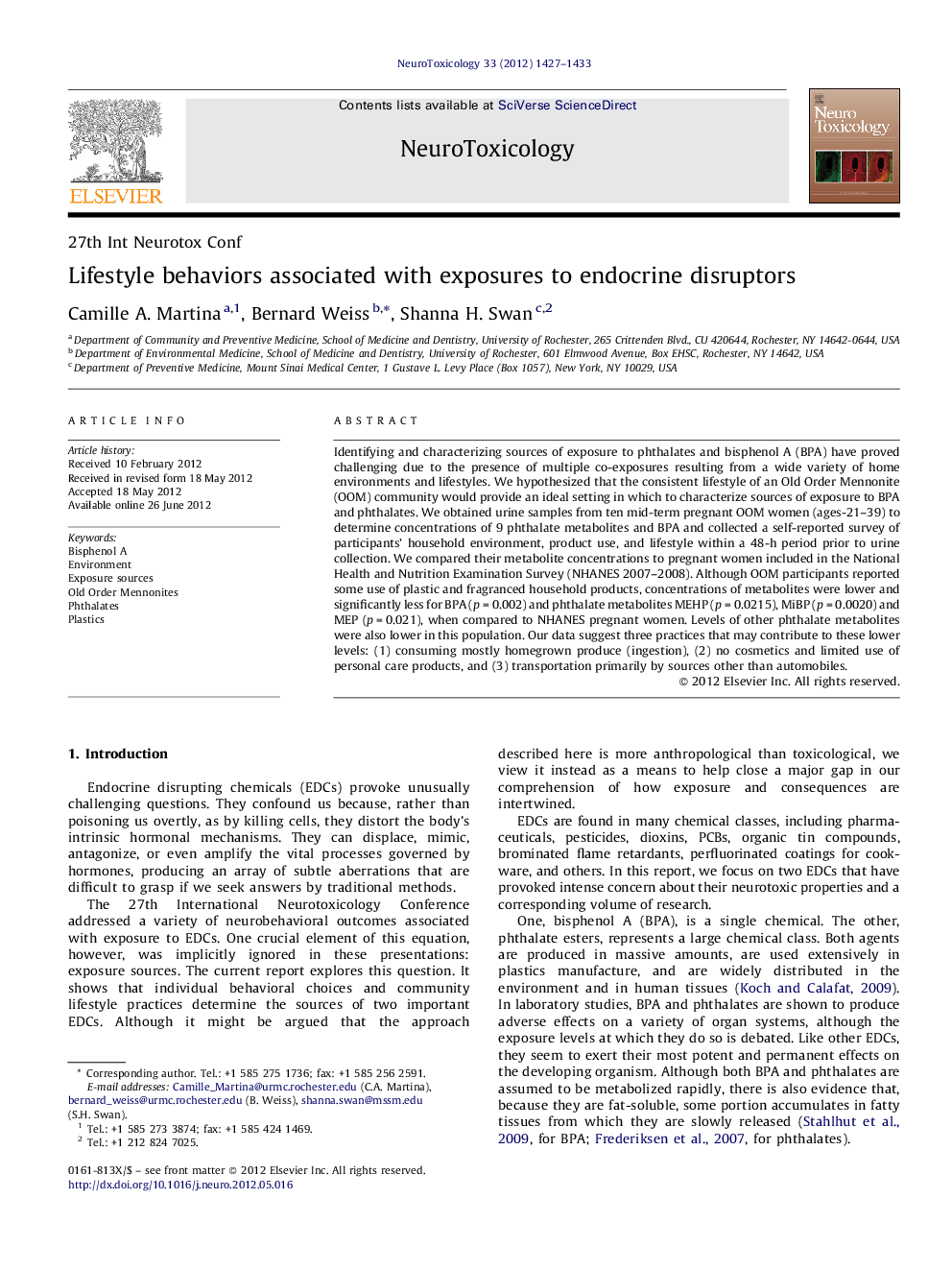| Article ID | Journal | Published Year | Pages | File Type |
|---|---|---|---|---|
| 2589904 | NeuroToxicology | 2012 | 7 Pages |
Identifying and characterizing sources of exposure to phthalates and bisphenol A (BPA) have proved challenging due to the presence of multiple co-exposures resulting from a wide variety of home environments and lifestyles. We hypothesized that the consistent lifestyle of an Old Order Mennonite (OOM) community would provide an ideal setting in which to characterize sources of exposure to BPA and phthalates. We obtained urine samples from ten mid-term pregnant OOM women (ages-21–39) to determine concentrations of 9 phthalate metabolites and BPA and collected a self-reported survey of participants’ household environment, product use, and lifestyle within a 48-h period prior to urine collection. We compared their metabolite concentrations to pregnant women included in the National Health and Nutrition Examination Survey (NHANES 2007–2008). Although OOM participants reported some use of plastic and fragranced household products, concentrations of metabolites were lower and significantly less for BPA (p = 0.002) and phthalate metabolites MEHP (p = 0.0215), MiBP (p = 0.0020) and MEP (p = 0.021), when compared to NHANES pregnant women. Levels of other phthalate metabolites were also lower in this population. Our data suggest three practices that may contribute to these lower levels: (1) consuming mostly homegrown produce (ingestion), (2) no cosmetics and limited use of personal care products, and (3) transportation primarily by sources other than automobiles.
